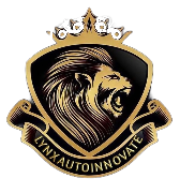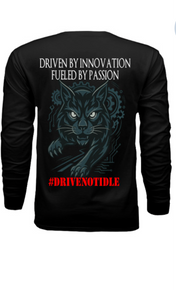Your car’s brakes are its ultimate safety system — the difference between control and catastrophe. They don’t just stop your vehicle; they keep you safe in every traffic condition. Understanding how brakes work, the types your car may have, and how to maintain them is essential for every driver.
How Brakes Work
When you press the brake pedal, you activate a hydraulic system that multiplies your force. Brake fluid pushes pistons in calipers (or wheel cylinders), pressing brake pads or shoes against a rotating surface (rotor or drum). This friction slows and stops your wheels.
Modern vehicles combine mechanical, hydraulic, and electronic components for consistent stopping power and safety.
Main Types of Brake Systems
1.Disc Brakes
How They Work: Found on most modern cars, disc brakes use calipers to squeeze pads against metal rotors.
Pros: Strong stopping power, better cooling, consistent performance in wet conditions.
Cons: Can wear faster under aggressive driving; rotors may warp from heat.
Maintenance: Replace pads before they wear too thin, resurface or replace rotors if warped or scored.
2.Drum Brakes
How They Work: Brake shoes push outward against a drum’s inner surface to create friction.
Pros: Durable and great for rear-wheel braking; doubles as an effective parking brake.
Cons: Less efficient at heat dissipation; prone to brake fade under heavy braking.
Maintenance: Clean and adjust regularly, replace shoes when worn, and check for fluid leaks at wheel cylinders.
3.ABS (Anti-lock Braking System)
How It Works: Uses sensors to detect wheel lock-up during hard braking, pulsing the brakes rapidly to maintain traction.
Pros: Prevents skidding and improves steering control.
Cons: More complex and costly to repair if sensors or modules fail.
Maintenance: Keep wheel sensors clean; address warning lights promptly.
4.Regenerative Brakes (Hybrid & EVs)
How They Work: Capture kinetic energy during braking and convert it into electricity to recharge the battery.
Pros: Extends brake pad life, improves efficiency, reduces wear.
Cons: Can feel less responsive at low speeds; more complex system.
Maintenance: Still requires brake fluid
Components That Make It All Work
- Brake Pads/Shoes: Provide friction against rotors or drums.
- Rotors/Drums: Spinning surfaces that brakes clamp onto.
- Calipers/Wheel Cylinders: House pistons that press pads or shoes.
- Brake Lines: Carry hydraulic fluid pressure.
- Master Cylinder: The main pressure source when you press the pedal.
- Brake Fluid: Transfers your pedal pressure through the system.
Common Brake Issues and Warning Signs
Symptom Likely Cause:
- Squealing noise Worn brake pads
- Grinding sound Metal-on-metal contact (pads completely worn)
- Vibrations during braking Warped rotors
- Soft or spongy pedal Air or moisture in brake lines
- Car pulls to one side Uneven pad wear or stuck caliper
- Warning light ABS or system fault
Brake Maintenance Tips
- Check pad thickness and rotor condition every 10,000–15,000 miles.
- Flush and replace brake fluid every 2–3 years.
- Avoid “riding” the brakes on long descents — shift to lower gear when possible.
- Have your braking system inspected if the pedal feels soft or the car vibrates.
- Always use manufacturer-recommended parts and fluid types.
💡 Pro Tip: Don’t wait for squeaks to become grinds. Once metal meets metal, repair costs multiply — and your stopping distance increases dangerously.
Types of Performance Brakes
(For Enthusiasts)
Slotted Rotors: Help remove heat, gas, and debris for consistent braking.
Drilled Rotors: Great for performance and aesthetics, but may crack under high stress.
Ceramic Pads: Offer quiet, clean performance with low dust and long lifespan.
Carbon-Carbon or Carbon-Ceramic Systems: Used in high-end sports cars — extremely light, strong, and heat resistant.

















